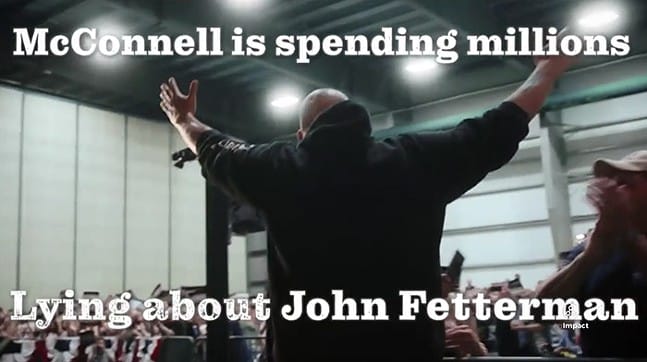Experiences refined for people
Experiences refined for people
44% of Republican, 36% of Democratic, and 42% of Independent voters said they pay less attention to political ads than other TV ads during an election year.
With more political ads than ever, capturing the attention and hearts of voters has become a necessary art form, blending traditional techniques with cutting-edge digital strategies.
Explore 7 innovative political marketing examples from past election cycles to inspire your 2024 campaign. All examples showcase how candidates and parties use social media, data analytics, and other strategies to connect with and inspire their electorate.
Note: Our discussion is apolitical, focusing solely on marketing techniques without endorsing any political ideology.
A successful political ad hinges on three key factors.
A successful political ad speaks directly to its target audience, addressing their specific concerns, values, and aspirations. For example, ads targeting young voters might focus on issues like climate change and student debt, while those aimed at older demographics might concentrate on healthcare and social security.
Demographic targeting enhances message resonance with the intended audience, increasing its impact and a candidate’s favorability.
It’s not just about what you say but how you say it. The most successful ads tell a story, evoke emotions, or challenge the status quo.
Creative messaging should leave a lasting impression on the viewer through a compelling narrative, striking visuals, and/or a catchy slogan. It should be clear, concise, and aligned with the candidate’s overall campaign theme.
By analyzing voter data, campaigns can tailor their ads to specific segments of the electorate based on their past voting behavior, online activities, and even consumer habits.
Data-driven targeting increases the likelihood of voter turnout and support.
📚 Related article: 5 Key Political Ad Trends for Election Season 2024: Read about the trends shaping the 2024 election season.
Political advertising success is driven by understanding voter demographics, crafting impactful messaging, and utilizing advanced data targeting.
The Ad: Jefferson Shreve’s Indianapolis mayoral campaign ads, marked by heavy personal investment, contrasted with incumbent Mayor Joe Hogsett’s campaign, which raised significantly less but from a diverse donor base. Hogsett’s ads focused on community building. The ad showcased him eating and spending time with community members.
Why It Succeeded: Despite Shreve’s record spending, Hogsett’s win highlights the importance of highlighting community issues to connect with a broader base of supporters.
Key Takeaway: Hogsett’s victory illustrates that while financial resources are important, they don’t guarantee electoral success. Building a wide coalition through messaging and canvassing can be equally, if not more, influential in a political campaign.

The Ad: Representative Darrin Camilleri’s campaign used streaming video ads, targeting different local voters based on their political leanings and issues, such as reproductive rights for moderate, pro-choice female voters.
Why It Succeeded: Camilleri’s campaign targeted moderate, female, pro-choice voters with an ad on reproductive rights and another general ad aimed at Democrats and Independents who have voted in past midterm elections.
Key Takeaway: This precise targeting, based on detailed voter data such as political leanings, voting history, and demographic information, ensured the messaging was highly relevant for each viewer group.
The Ad: Beto O’Rourke’s campaign used Facebook and Instagram ads to target diverse interests, including fans of Joe Rogan and various sports and entertainment preferences.
Why It Succeeded: O’Rourke’s campaign’s decision to target Joe Rogan fans, a group not typically aligned with Democratic messaging, indicated a strategic move to engage a wider, possibly untapped audience.
Key Takeaway: Opening up the targeting base to include unexpected audiences broadened O’Rourke’s appeal beyond traditional party lines.

From one of John Fetterman’s campaigns’ “Republicans for Fetterman” ads.
The Ad: John Fetterman’s campaign ad, “Republicans for Fetterman,” featured testimonials from Republican voters who supported him over his Republican opponent, emphasizing his Pennsylvania roots and portraying him as a Washington outsider.
Why It Succeeded: The ads successfully tapped into bipartisan appeal, showcasing cross-party support, which is rare in today’s polarized political climate. This example strategically highlighted Fetterman’s local connection and perceived outsider status in Washington, resonating with voters disillusioned with traditional party politics.
Key Takeaway: Reaching across the aisle with a powerful messaging strategy tailored to different demographics can increase the voting base.
What role does messaging play in a successful political ad?
“When the creative aspects of an ad – its imagery, tone, and narrative – resonate with what voters feel and believe, it creates a powerful connection. This builds trust and credibility, key ingredients for any successful campaign. It’s about understanding the audience’s values and reflecting them back in a way that feels authentic and compelling in the ad’s creative messaging.”
Pelosi puppet Val Demings went to Washington and became just another radical rubber stamp pic.twitter.com/crQdHko1gn
— Marco Rubio (@marcorubio) July 19, 2022
The Ad: Featuring Florida sheriffs, Senator Marco Rubio’s re-election campaign ad criticizes his opponent, Rep. Val Demings, portraying her as opposed to law enforcement and aligning her closely with Nancy Pelosi.
Why It Succeeded: Rubio strategically targeted concerns about law enforcement and public safety, a key issue for many Floridian voters. Using authoritative figures from law enforcement reinforced Rubio’s stance on this issue, contrasting it with Demings’ positions.
Key Takeaway: Using credible figures and aligning messages with public concerns effectively resonates with voters’ values and priorities.
The Ad: President Joe Biden’s “Make Life Better” campaign ad focused on his plan to improve the lives of Americans, highlighting positive and forward-looking solutions.
Why It Succeeded: Political advertising research from 2020 revealed viewers engage more with positive content, especially on Facebook. Biden’s positive ad messaging likely resonated with voters tired of negative campaigning, offering a refreshing contrast. Instead, it emphasized Biden’s policies and vision in building a better America.
Key Takeaway: Understanding the audience sentiment allows campaigns to create messages that deeply resonate with voters.
The Ad: Governor Gretchen Whitmer’s first re-election ad highlighted her achievements in affordable child care and education without new taxes. The ad, targeting a broad audience including potentially undecided voters, aired in the Detroit, Grand Rapids, Flint, Lansing, and Traverse City media markets.
Why It Succeeded: Its messaging focused on “kitchen-table issues” like education and family, appealing to everyday people and avoiding hyper-partisanship, targeting Whitmer’s key demographics, like suburban women, with tailored messaging and targeting.
Key Takeaway: Relatable messaging and focusing on widely relevant issues demonstrated Whitmer’s appeal to a diverse voter base.
You may not have the $13.5 million budget of Jefferson Shreve, but as his competitor’s win revealed, you don’t need a large budget to win.
Focusing on messaging and understanding your voter base is paramount.
This strategy revolves around three key components:
With smaller budgets, every resource must be used efficiently to connect with and comprehend your voter base’s specific needs and preferences.
How can political advertisers with limited budgets still create successful campaigns?
“Data, particularly First-Party data, is an invaluable asset in political campaigning, offering deep insights into the target demographic. A nuanced understanding of where your audience lives and their core concerns allow you to use data to your advantage.
With this knowledge, craft a message that resonates, reaching them wherever they are. Equally important is a strong, clear, and concise message that addresses your intended audience’s specific needs and worries. First-Party Data can level the playing field for small budgets, allowing for more strategic resource allocation and targeted messaging that speaks directly to the voters’ needs and concerns.”
These examples affirm that regardless of financial resources, a campaign’s ability to connect authentically with its voter base is the cornerstone of electoral success.
We’re not only fast, but our strategies work.
With KORTX, benefit from a quick start campaign, access to premium audiences, precise targeting, customized creative solutions, and a team dedicated to ensuring you win.
Kate Meda is a Copywriter at KORTX. She enjoys omitting needless words and making things sound good.
From us to your inbox weekly.